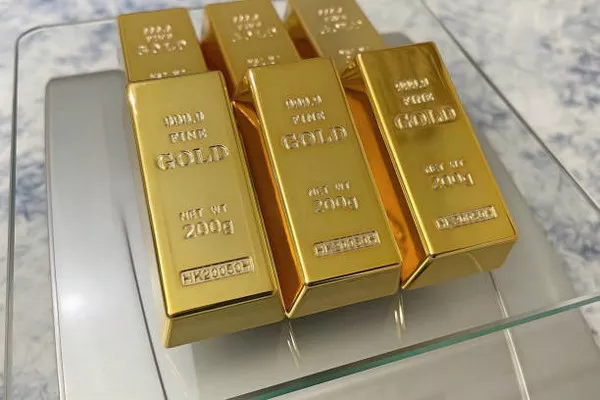Investing in gold futures is a popular strategy for both individual and institutional investors looking to hedge against inflation, diversify portfolios, or speculate on price movements in the gold market. While many investors choose to close their positions before expiration, some opt to take physical delivery of the gold. This article outlines the process of taking delivery of gold futures, the implications, and the practical considerations involved.
Understanding Gold Futures
Gold futures contracts are standardized agreements traded on exchanges like the COMEX, which is part of the New York Mercantile Exchange (NYMEX). Each contract typically represents 100 troy ounces of gold. Futures contracts are primarily used for speculation or hedging; however, they can also be settled by physical delivery of gold.
Key Terms
- Contract Size: The amount of gold represented by the futures contract, usually 100 troy ounces.
- Expiration Date: The date on which the contract matures and the obligation to deliver or take delivery of gold arises.
- Settlement Price: The price of gold at which the futures contract is settled, usually determined on the expiration date.
Why Take Delivery of Gold Futures?
Taking delivery of gold futures might appeal to investors for several reasons:
Physical Ownership: Investors who take delivery own the physical gold, which can serve as a hedge against currency fluctuations and economic instability.
Long-Term Investment: Holding physical gold can be a long-term investment strategy, especially during periods of economic uncertainty.
Avoiding Counterparty Risk: By taking delivery, investors eliminate counterparty risk associated with the futures market.
The Process of Taking Delivery
Step 1: Review Contract Specifications
Before deciding to take delivery, it is essential to review the specifications of the gold futures contract you are holding. This includes understanding the expiration date, delivery points, and quality specifications of the gold to be delivered.
Step 2: Notify Your Broker
If you decide to take delivery, the first action is to notify your broker. Brokers typically have a deadline by which delivery notices must be submitted, usually a few days before the expiration date. It’s crucial to communicate clearly and provide the necessary information for the delivery process.
Step 3: Verify Your Eligibility
To take delivery of gold futures, you must meet certain eligibility requirements. These may include:
- Having an active futures trading account.
- Meeting margin requirements.
- Having the necessary funds to cover potential delivery fees and storage costs.
Step 4: Delivery Notice
Once your broker has been notified, they will submit a delivery notice to the exchange. This notice serves as an official request to deliver the gold underlying your futures contract. The delivery notice must include specific details such as:
- The contract number.
- The quantity of gold.
- Your contact information.
- The desired delivery location.
Step 5: Choosing a Delivery Location
The COMEX specifies approved delivery locations, primarily located in major financial hubs. You will need to select a location that meets the contract specifications. The primary delivery points for gold futures include:
- New York
- Chicago
- Los Angeles
Step 6: Arranging for Transportation
After the delivery notice has been submitted, arrangements must be made for the transportation of the gold. The logistics of moving physical gold can be complex and costly. Considerations include:
- Insurance: Ensure that the gold is adequately insured during transit.
- Security: Gold is a high-value asset, and transporting it requires careful planning to mitigate risks of theft or loss.
Step 7: Taking Possession
Once the gold has arrived at the designated location, you will need to verify the shipment against the contract specifications. This includes checking:
- Weight and purity of the gold.
- Packaging and documentation.
If everything matches, you can formally take possession of the gold. It’s advisable to keep all relevant documentation, including the delivery receipt, for future reference.
Costs Associated with Taking Delivery
Taking delivery of gold futures involves various costs that investors should be aware of:
- Delivery Fees: These may be charged by the broker or the exchange.
- Transportation Costs: Costs associated with moving the gold to your desired location.
- Insurance Costs: Premiums for insuring the gold during transit.
- Storage Fees: If you plan to store the gold, you may incur fees for secure storage facilities.
Risks and Considerations
While taking delivery of gold futures has its advantages, it also carries certain risks:
Market Volatility: The price of gold can fluctuate significantly. If you take delivery and the market price falls, you could face losses.
Storage Risk: Physical gold requires secure storage, which can be expensive and logistically challenging.
Liquidity Issues: Once you take physical possession of gold, selling it can be less straightforward than selling a futures contract.
See Also A Comprehensive Guide to Buying E-Gold from NSEL
Alternatives to Taking Delivery
If taking physical delivery seems daunting, there are alternatives:
Cash Settlement: Many futures contracts allow for cash settlement, where you receive the cash equivalent of the gold rather than taking physical possession.
ETFs and Other Instruments: Exchange-traded funds (ETFs) that track gold prices provide exposure to gold without the complexities of physical delivery.
Conclusion
Taking delivery of gold futures can be a rewarding strategy for those seeking physical ownership of this precious metal. However, it requires a clear understanding of the process, associated costs, and potential risks. Investors should carefully consider their objectives and consult with financial advisors before proceeding with delivery to ensure that it aligns with their overall investment strategy. With proper planning and execution, taking delivery of gold futures can be a viable way to secure a tangible asset in your investment portfolio.
You Might Be Interested In
- Is the U.S. Dollar Coin Made of Real Gold?
- Gold Bullion vs Gold Coins: What’s the Difference?
- The Quality of Mexican Silver: A Comprehensive Analysis


